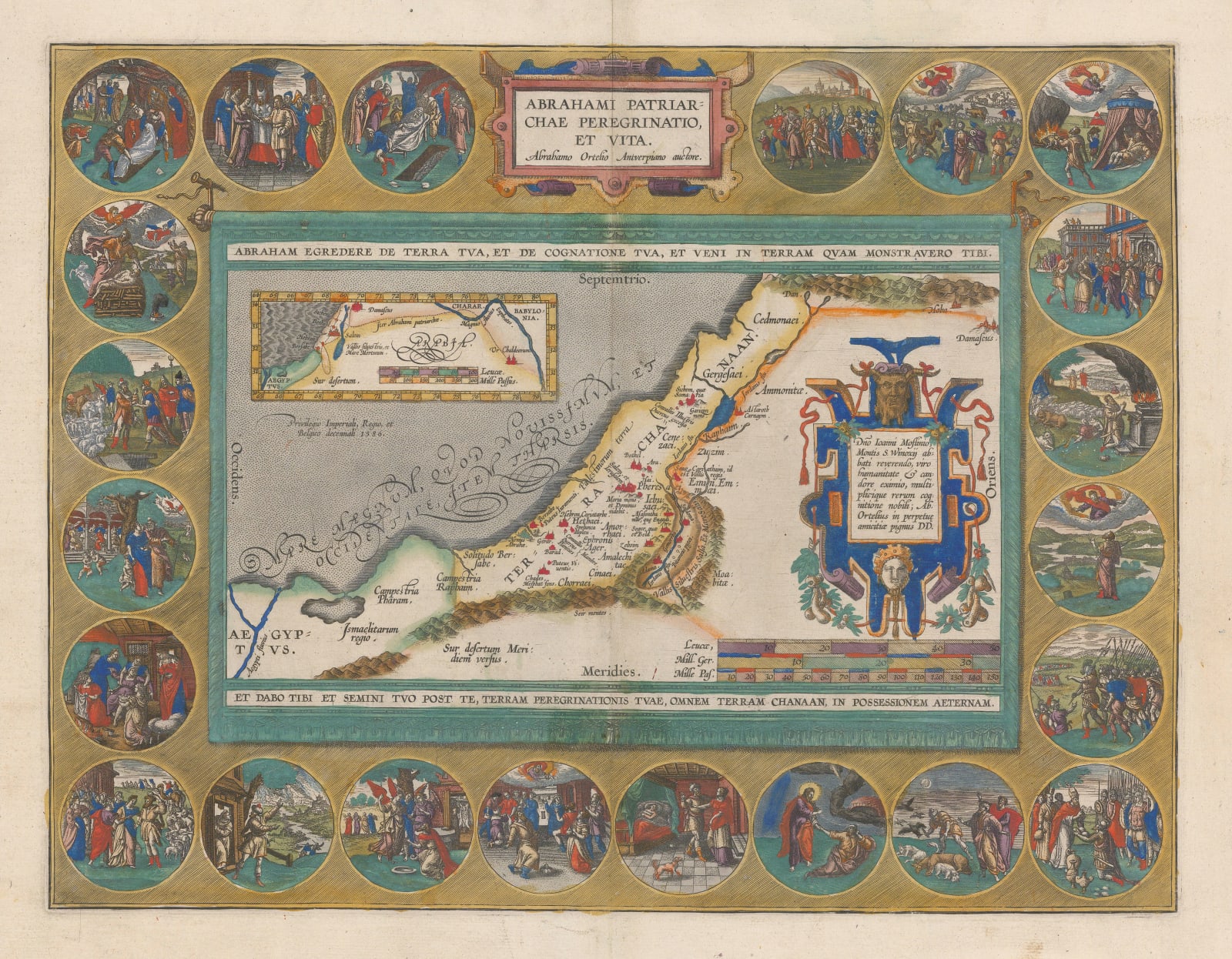Abraham Ortelius
37 x 47 cm
From 1579 onwards, Ortelius added a whole new appendix to his “Theatrum Orbis Terrarum” the first printed atlas. This appendix, known as the Parergon, contained a series of maps illustrating the regions and epochs of the classical world. Several of these maps were dedicated to myths and legends, such as a cartographic imagining of the travels of Aeneas after the Trojan War and the travels of Jason and the Argonauts in search of the Golden Fleece. A further group of these maps include cartographic imaginings of Biblical epochs. As with the “Theatrum”, the number of maps in the Parergon grew in number as its editions progressed.
One of the most interesting features of the Parergon is that the majority of the maps were authored by Ortelius himself with his name usually present on the map; this is in direct opposition to the maps in the “Theatrum”, where Ortelius usually credits the original author of the maps presented. The one major exception is the map of the world, where Ortelius does sign his name.
This map is one of the most celebrated and famous of the maps present in the Parergon. It illustrates the life and journeys of Abraham. The map is relatively small and is based on his earlier map sourced from Tileman Stella. However, this version is simplified with the geographical regions and nomenclature compiled from the Book of Genesis. The most famous feature of this map is the series of medallions which illustrate important episodes of Abraham’s life and times as narrated in the Bible. There are twenty-two of these in number and each illustrates a particular event. These include Abraham receiving the Promise of the Land, the Birth of Isaac, the sacrifice of Isaac, and the burials of Sarah and Abraham among others. The medallions are beautifully engraved, and on this example, very finely illuminated. An inset on the upper left of the map is a schematic map depicting the wonderings of the Patriarch in Egypt, the Levant and to the city of Ur in Babylon (Iraq).
This example of the map is the 1595 edition and is the slightly rarer plate with the background hatching running diagonally from lower left to upper right. The text on the reverse is in Latin and the outstanding colour is original. Image of the reverse available on request. [MEAST4665]


